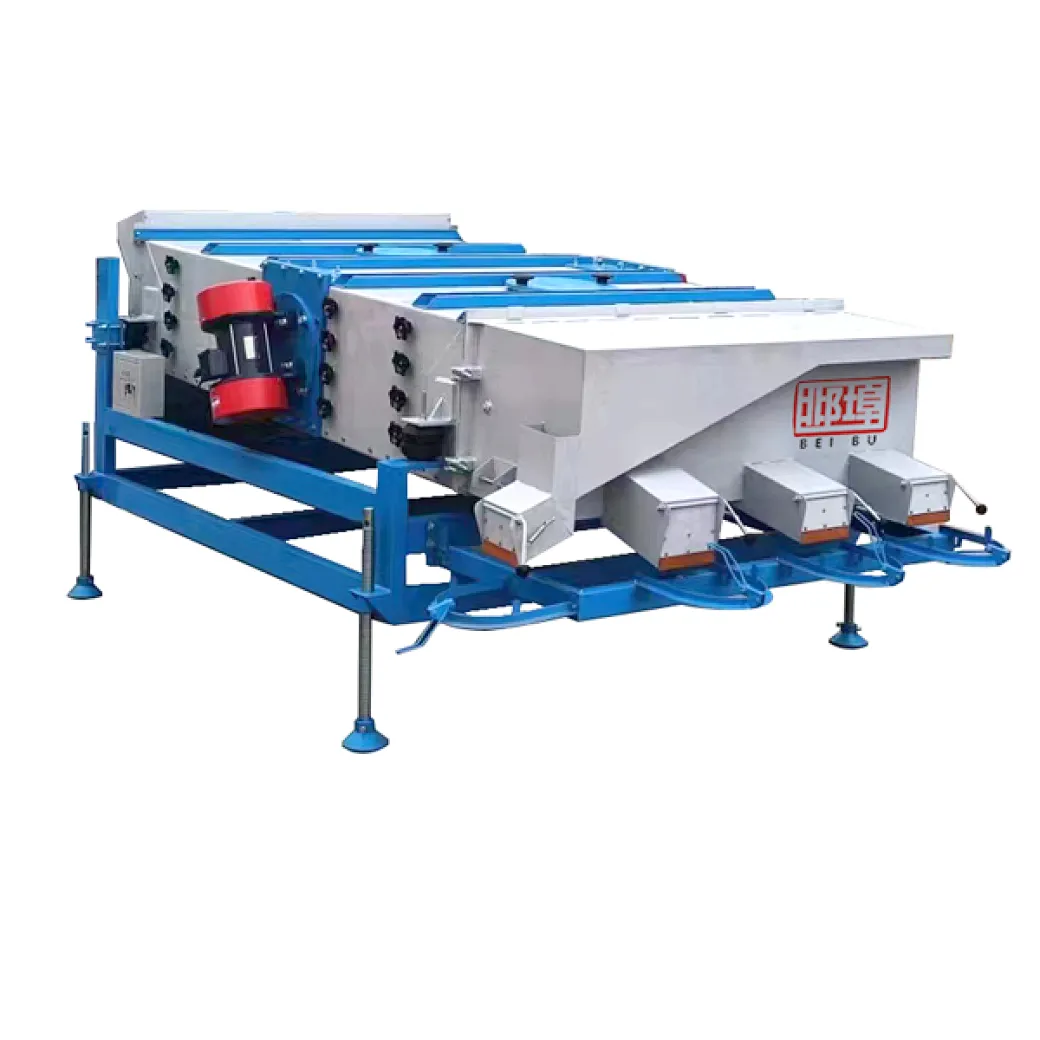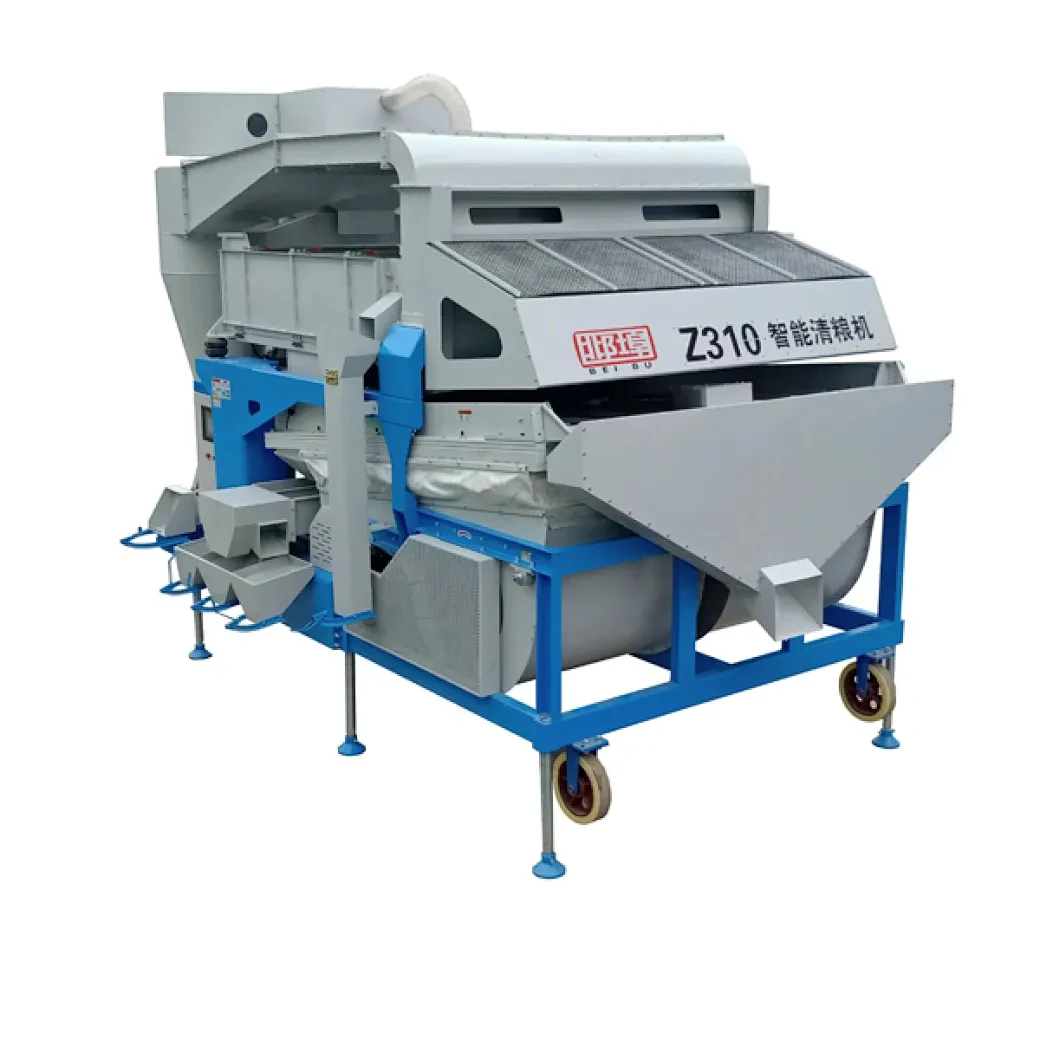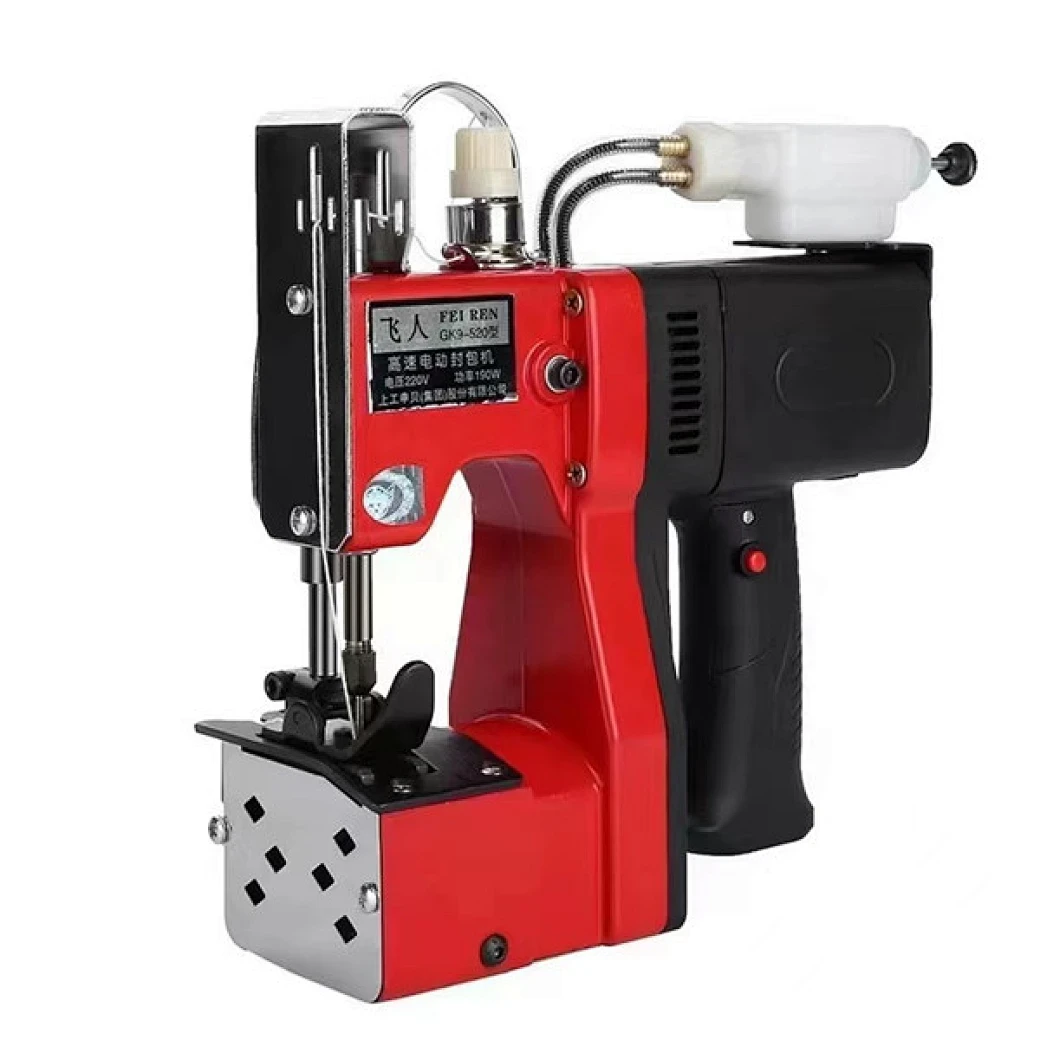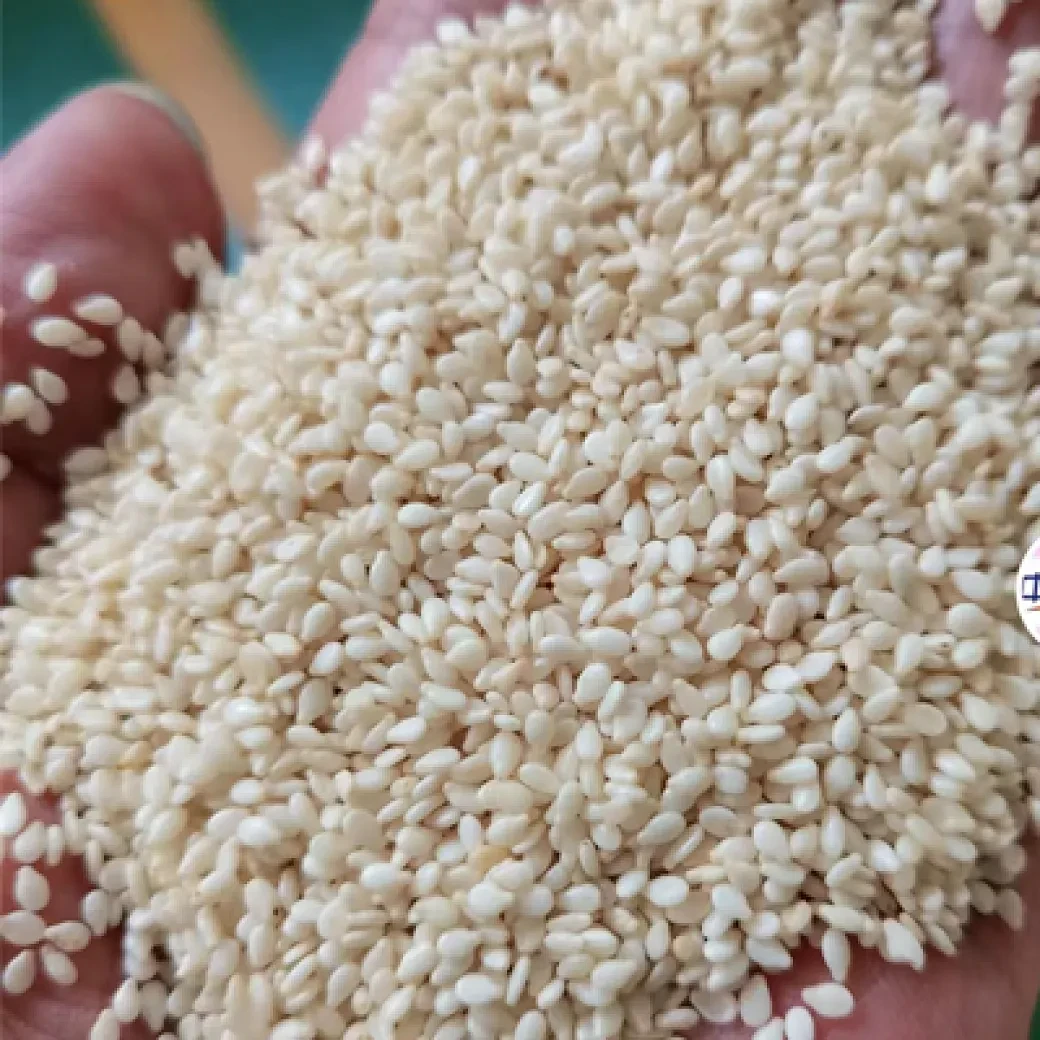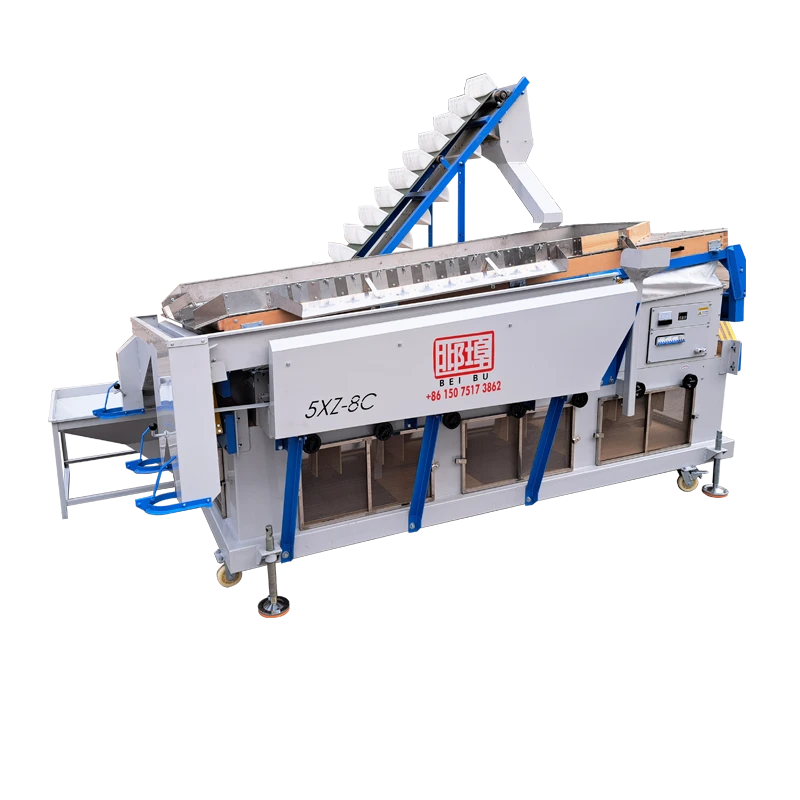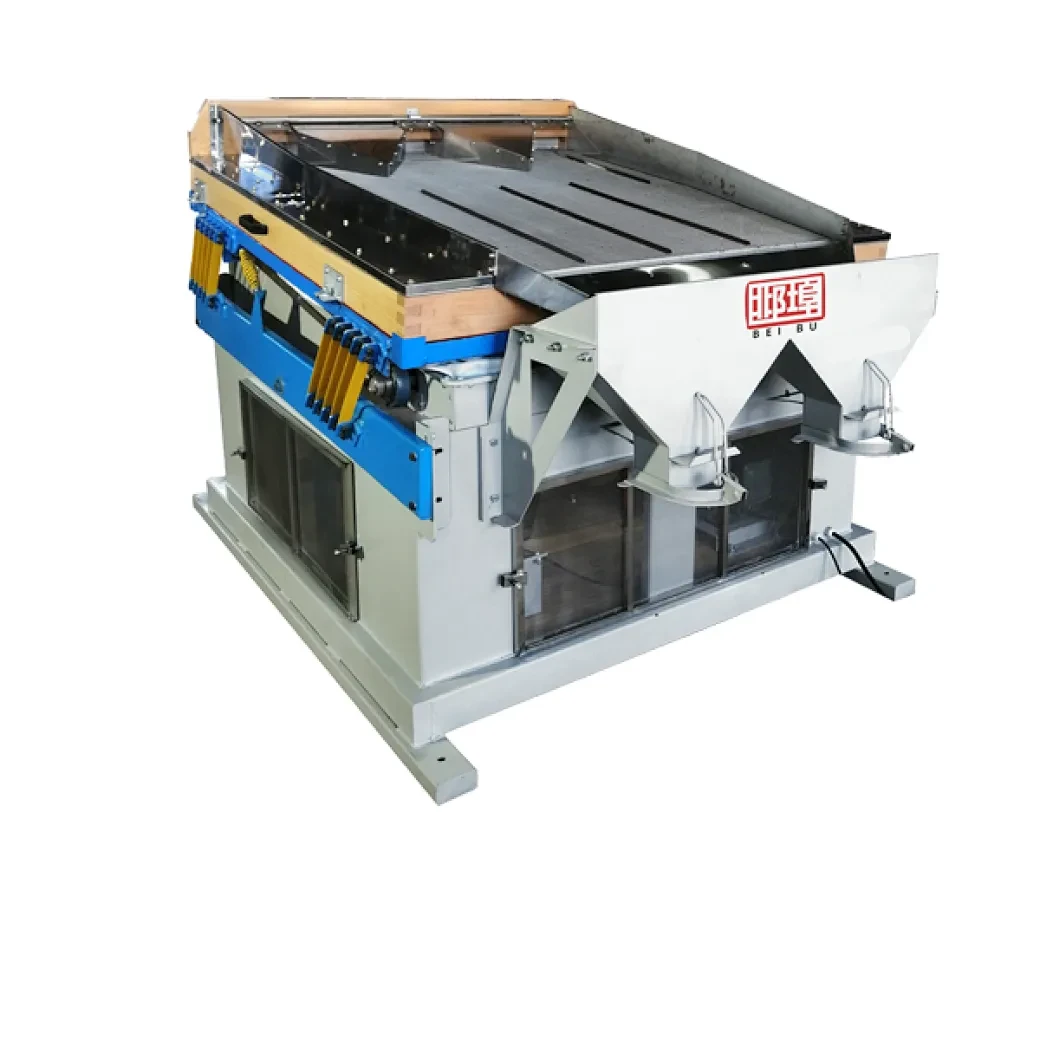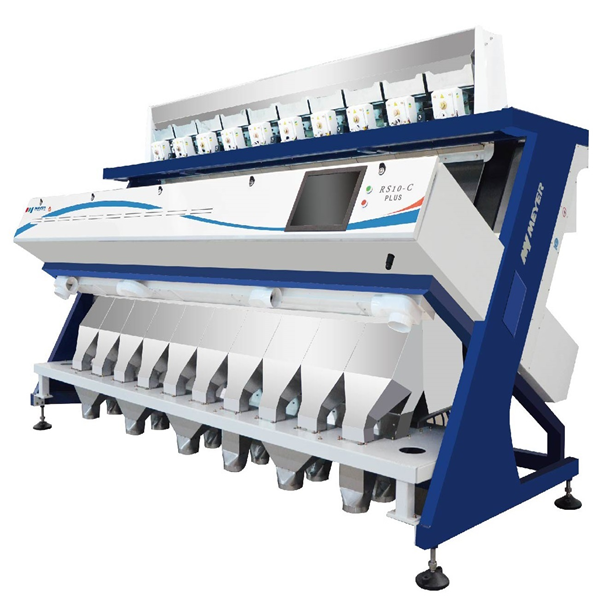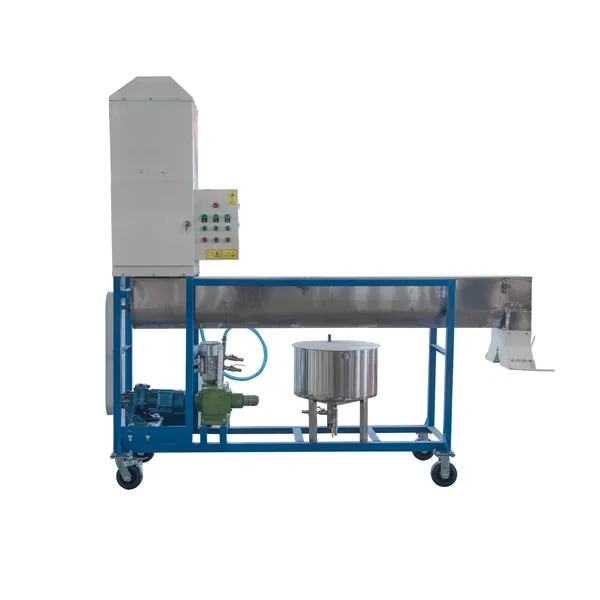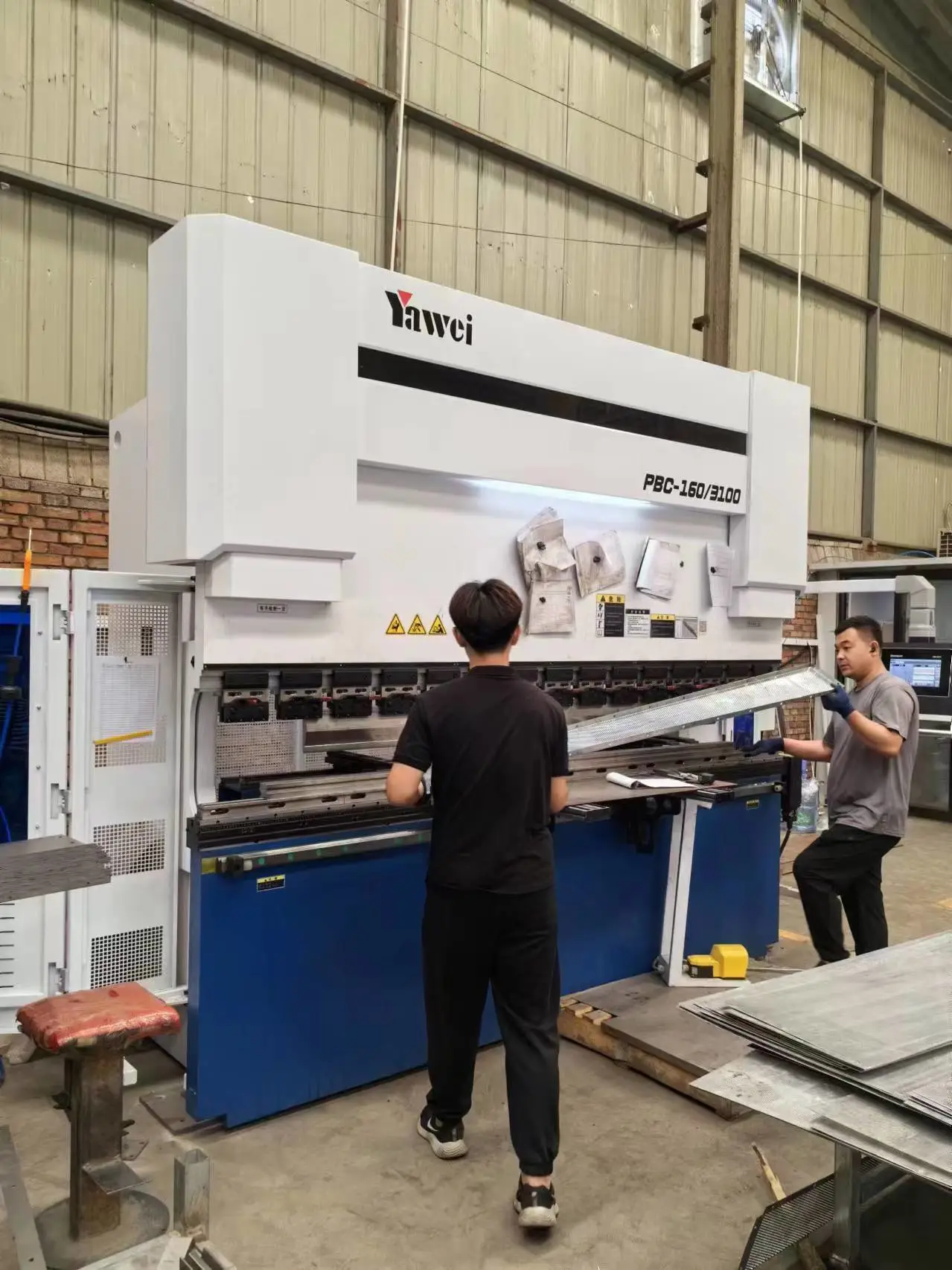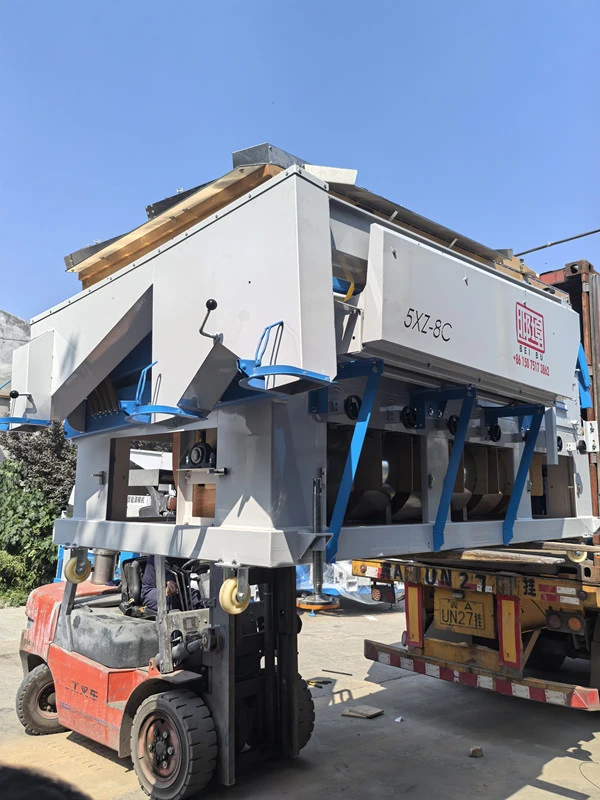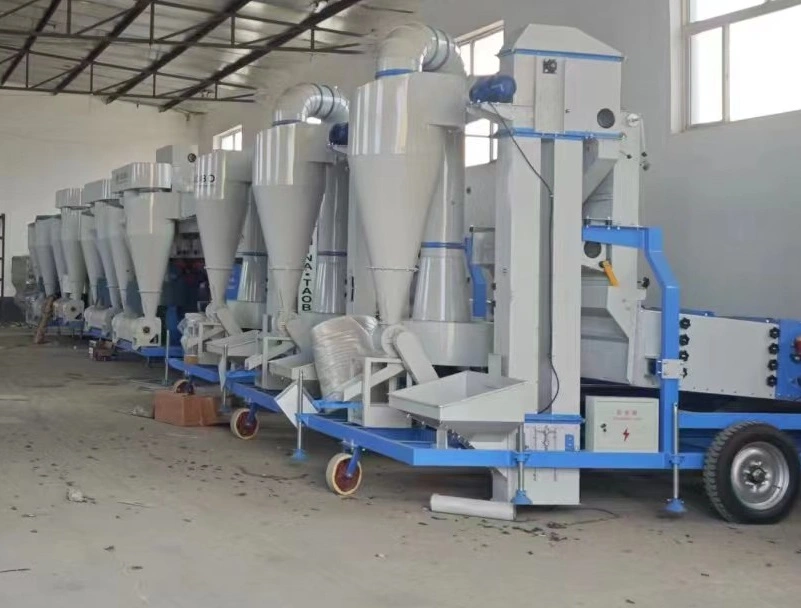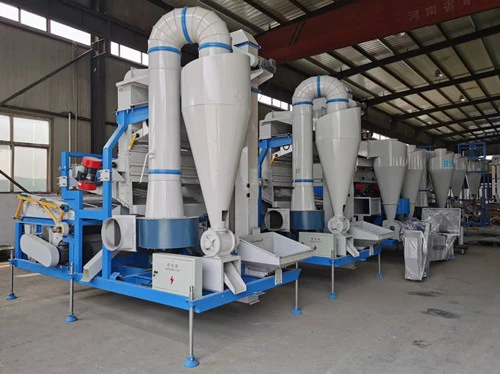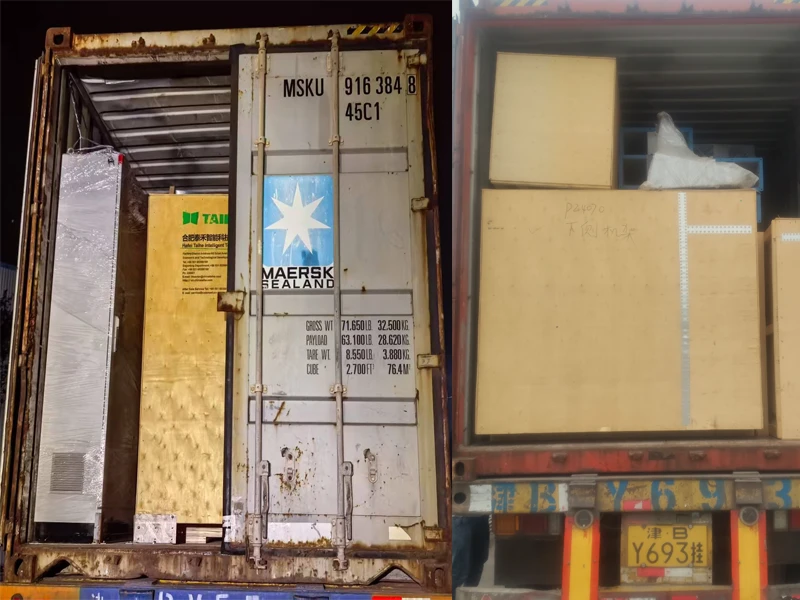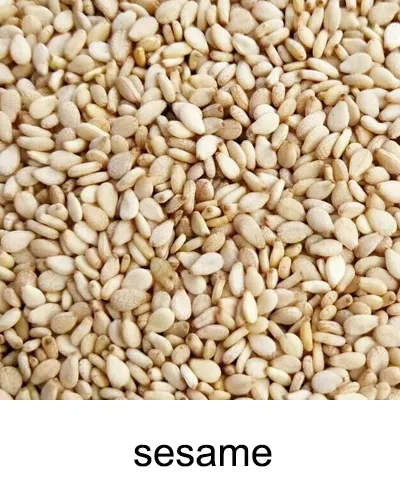
Precision Grading: Elevating Wheat Quality in Modern Agriculture
In the competitive landscape of agricultural commodities, the quality of grain directly impacts market value, storage longevity, and suitability for various end-use applications, from milling to brewing. Ensuring a consistent, high-purity wheat supply is paramount for producers and processors worldwide. This imperative drives the demand for advanced post-harvest solutions, particularly efficient cleaning and grading machinery. Modern grain processing facilities rely heavily on sophisticated equipment to remove impurities, sort by size and density, and ultimately enhance the overall quality of their produce. This article delves into the critical role of the grading machine for wheat, exploring its technological intricacies, operational benefits, and strategic significance in today's agricultural value chain.
The innovative 5XFZ-25S Air Screen Cleaner With Gravity Table, combined with the 5XFJ-10C Vibration Grader, exemplifies the cutting-edge technology defining the future of grain processing. This integrated system offers a comprehensive solution for achieving unparalleled purity and uniform grading for wheat and other cereals. It represents a significant leap forward from traditional methods, providing a multi-stage cleaning and sorting process that addresses a wide spectrum of impurities and variations within a grain batch. By incorporating this level of precision, agricultural businesses can significantly reduce waste, optimize processing efficiency, and meet the stringent quality standards demanded by both domestic and international markets, thereby securing their competitive edge.
Evolving Technologies in Agricultural Grading: A Trend Analysis
The agricultural machinery sector is undergoing a profound transformation, driven by demands for higher productivity, sustainability, and technological integration. Key trends include the adoption of automation, IoT-enabled monitoring, and energy-efficient designs, all aimed at optimizing resource utilization and minimizing environmental impact. Within this context, the evolution of the grading machine for wheat is particularly notable. Early models were largely mechanical, relying on basic sieving principles. Modern iterations, however, integrate advanced aerodynamics, precise vibratory mechanisms, and sophisticated control systems to achieve superior separation efficacy. This progression ensures that contaminants such as chaff, straw, undeveloped kernels, and foreign seeds are effectively removed, while the wheat is meticulously sorted by size, shape, and specific gravity.
Furthermore, the focus has shifted towards multi-functional systems that can handle diverse grain types with minimal adjustments, enhancing versatility for agricultural enterprises. The increasing emphasis on food safety and quality assurance has also spurred innovations in materials and construction, ensuring hygienic operation and compliance with international standards. As a result, contemporary grading machine in agriculture are not merely tools for impurity removal but are integral components of a comprehensive quality management system, enabling producers to meet stringent market specifications and maximize the value of their harvests. This continuous innovation underlines the industry's commitment to advancing agricultural practices and ensuring global food security through efficient processing.
Operational Workflow & Technical Advantages of Integrated Grading Systems
The 5XFZ-25S Air Screen Cleaner and 5XFJ-10C Vibration Grader operate as a meticulously orchestrated system to achieve optimal wheat purity and grading. The process typically begins with the air screen cleaner, which employs a combination of aspiration and multi-layer sieving. Raw wheat, often containing light impurities like dust, chaff, and straw, is first subjected to air suction, which lifts and separates these lighter elements. Following this, the grain passes over a series of vibrating screens with progressively finer perforations. This initial screening separates larger foreign materials and undersized kernels, preparing the wheat for subsequent, more precise sorting stages. The screens are designed for quick interchangeability, allowing for adaptability to various grain sizes and specific grading requirements, an essential feature for versatile grain processing operations.
After preliminary cleaning, the wheat proceeds to the gravity table. This component is crucial for separating grains based on their specific gravity, effectively removing shriveled, insect-damaged, or diseased kernels, as well as stones and other heavy impurities that share a similar size to healthy grains but differ in density. The gravity table utilizes a vibrating deck, airflow, and a slight incline to stratify the material, allowing denser particles to travel upwards while lighter ones flow downwards. Finally, the grain enters the vibration grader, which performs a final, highly precise size and shape separation. This multi-stage approach ensures maximum impurity removal and homogeneous grading, critical for achieving premium wheat quality. The materials used, such as high-grade steel for wear parts and precision-machined components, are selected for durability, corrosion resistance, and food safety, extending the machine's operational lifespan and maintaining sanitary conditions throughout the grain processing workflow. All components adhere to stringent internal quality control standards, ensuring reliability and consistent performance, thereby enhancing the operational longevity and efficiency for the user.
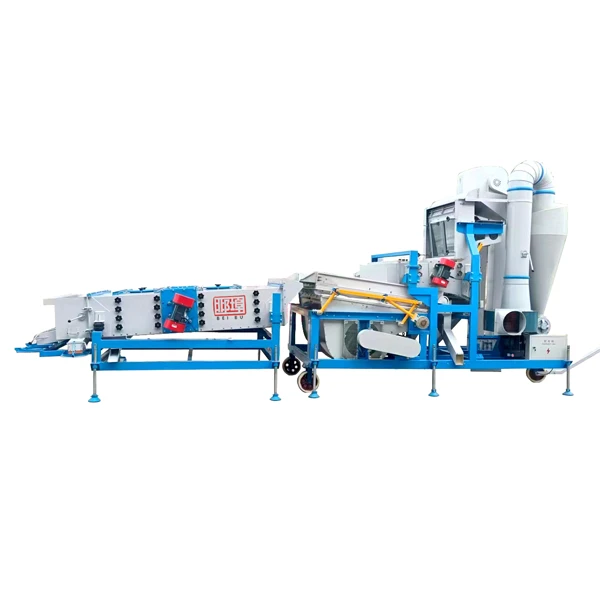
Figure 1: High-efficiency multi-layer sieves at work in a grain cleaning machine.
Key Technical Parameters for Advanced Wheat Grading Solutions
Understanding the technical specifications of a grading machine for wheat is crucial for making an informed investment decision. These parameters directly influence the machine's performance, capacity, energy consumption, and overall efficiency in a commercial setting. The table below outlines typical specifications for an integrated cleaning and grading system similar to the 5XFZ-25S Air Screen Cleaner with Gravity Table and 5XFJ-10C Vibration Grader, providing a clear benchmark for capabilities in modern grain processing operations.
| Parameter | Description | Value (5XFZ-25S + 5XFJ-10C Equivalent) |
|---|---|---|
| Model Combination | Integrated Air Screen Cleaner, Gravity Table, and Vibration Grader | 5XFZ-25S + 5XFJ-10C |
| Processing Capacity (Wheat) | Throughput for cleaning and grading wheat | Up to 10-15 T/H (Tonnes per Hour) |
| Total Power | Combined power consumption of all motors | Approx. 15-20 kW |
| Screen Layers | Number of sieving layers for varied separation | Typically 3-5 layers (Air Screen) + 2-3 (Vibration Grader) |
| Dimensions (L×W×H) | Overall footprint of the combined system | Approx. 8500×2500×3500 mm |
| Total Weight | Machine weight for structural considerations | Approx. 4500-5500 kg |
| Impurity Removal Rate | Percentage of foreign matter removed | ≥ 98% (Light Impurities), ≥ 95% (Heavy Impurities) |
| Grading Accuracy | Precision of size/density sorting | ≥ 99% for specified grades |
These specifications highlight the robust capabilities of modern grading solutions. High processing capacity ensures that large volumes of wheat can be handled efficiently, reducing bottlenecks in agricultural operations. Low power consumption contributes to reduced operational costs and a smaller environmental footprint. The multi-layer screen system and precise gravity separation are vital for achieving exceptional purity and uniform kernel size, directly impacting the quality of the final product. Understanding these metrics allows agricultural businesses to assess the suitability of equipment for their specific needs, ensuring they invest in machinery that delivers optimal performance and long-term value in their grain processing endeavors.
Diverse Application Scenarios and Industry Impact
The versatility of an advanced grading machine for wheat extends its application across a wide array of agricultural and industrial sectors. Primarily, these machines are indispensable in large-scale grain processing plants, where bulk quantities of wheat, corn, rice, and other cereals are cleaned and sorted before storage, milling, or export. Their ability to deliver a consistent, high-purity product is critical for maintaining supply chain integrity and meeting international trade standards. Seed processing companies also rely heavily on these systems to produce high-quality, uniform seed lots, ensuring optimal germination rates and robust crop development. This precision in seed grading directly impacts agricultural productivity and food security on a broader scale.
Beyond primary processing, these machines are vital in specialized applications such as breweries and distilleries, which require meticulously cleaned and graded grains to ensure the quality and consistency of their end products. Large-scale farms and agricultural cooperatives integrate these systems to enhance the marketability of their harvest, reducing dockage and increasing the overall value of their produce. The efficiency of a modern grading packing machine or grading sorting machine translates directly into reduced post-harvest losses, improved storage stability by minimizing moisture and foreign material, and ultimately, higher profitability for agricultural stakeholders. Their robust construction and precise engineering also ensure applicability in challenging environments, emphasizing their durability in the demanding agricultural sector.
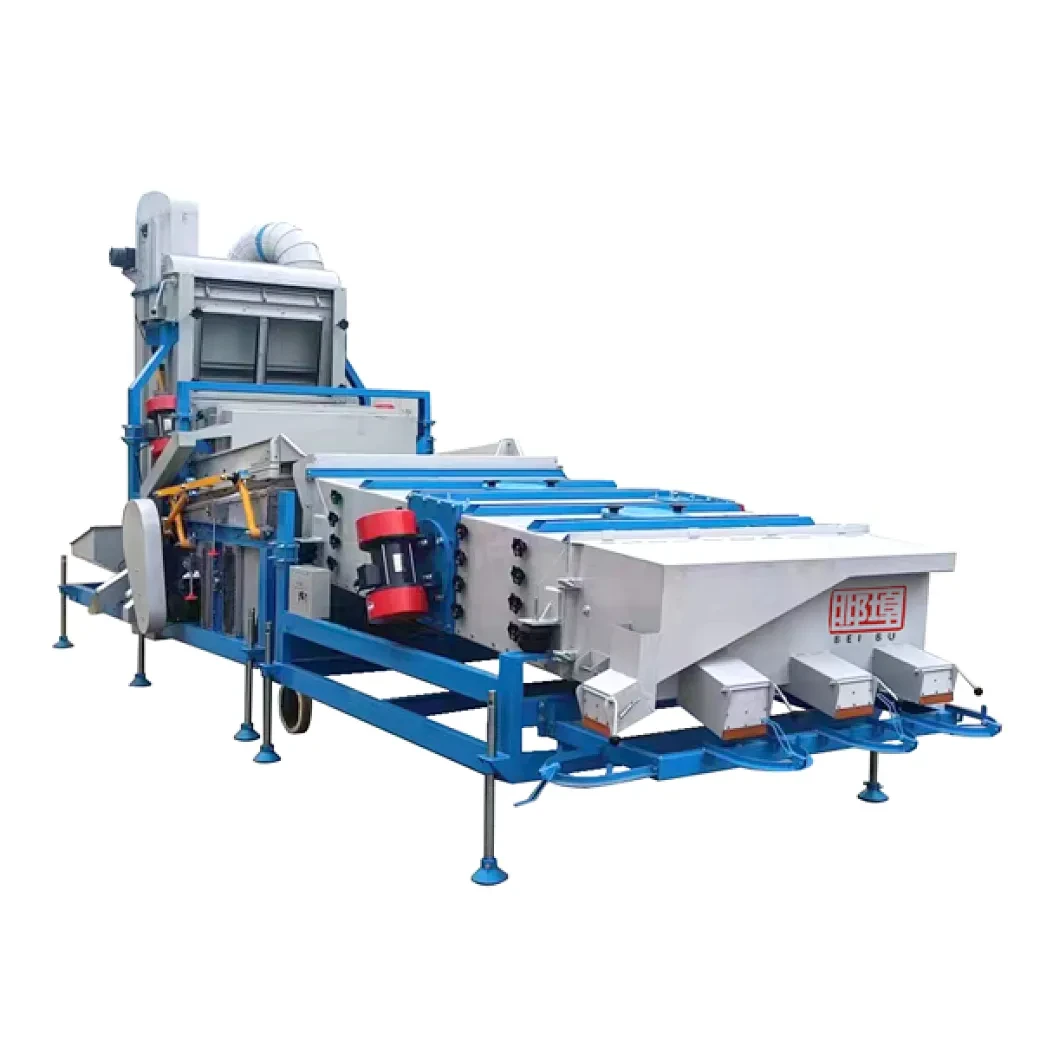
Figure 2: A modular design for easy integration into existing processing lines.
Competitive Advantages and Customization Solutions
In a market flooded with various agricultural machinery, the distinct advantages of a well-engineered grading machine for wheat become paramount. The combined functionality of the 5XFZ-25S Air Screen Cleaner and 5XFJ-10C Vibration Grader offers a significant edge over single-purpose machines. This integrated approach not only streamlines the cleaning and grading process but also minimizes the need for multiple independent units, saving valuable floor space and reducing overall operational complexity. Key differentiators include its superior impurity removal rate, which ensures a cleaner end product; its high grading accuracy, which results in more uniform grain batches; and its robust construction, designed for continuous, heavy-duty operation with minimal downtime. The system’s energy-efficient design also contributes to lower operating costs, making it a more sustainable choice for long-term investments.
Beyond standard capabilities, leading manufacturers understand that agricultural operations often have unique requirements. Therefore, offering comprehensive customization solutions is a critical competitive advantage. This includes tailoring machine capacity to match specific throughput needs, designing specialized screens for unique grain types or foreign material compositions, and integrating the system seamlessly into existing processing lines. Whether it’s optimizing for different wheat varieties, handling varying levels of contamination, or adapting to specific environmental conditions, the ability to provide bespoke solutions ensures that clients receive a grading system perfectly aligned with their operational demands. This level of flexibility, combined with the proven efficiency and durability of the core technology, positions manufacturers as trusted partners in enhancing grain quality.
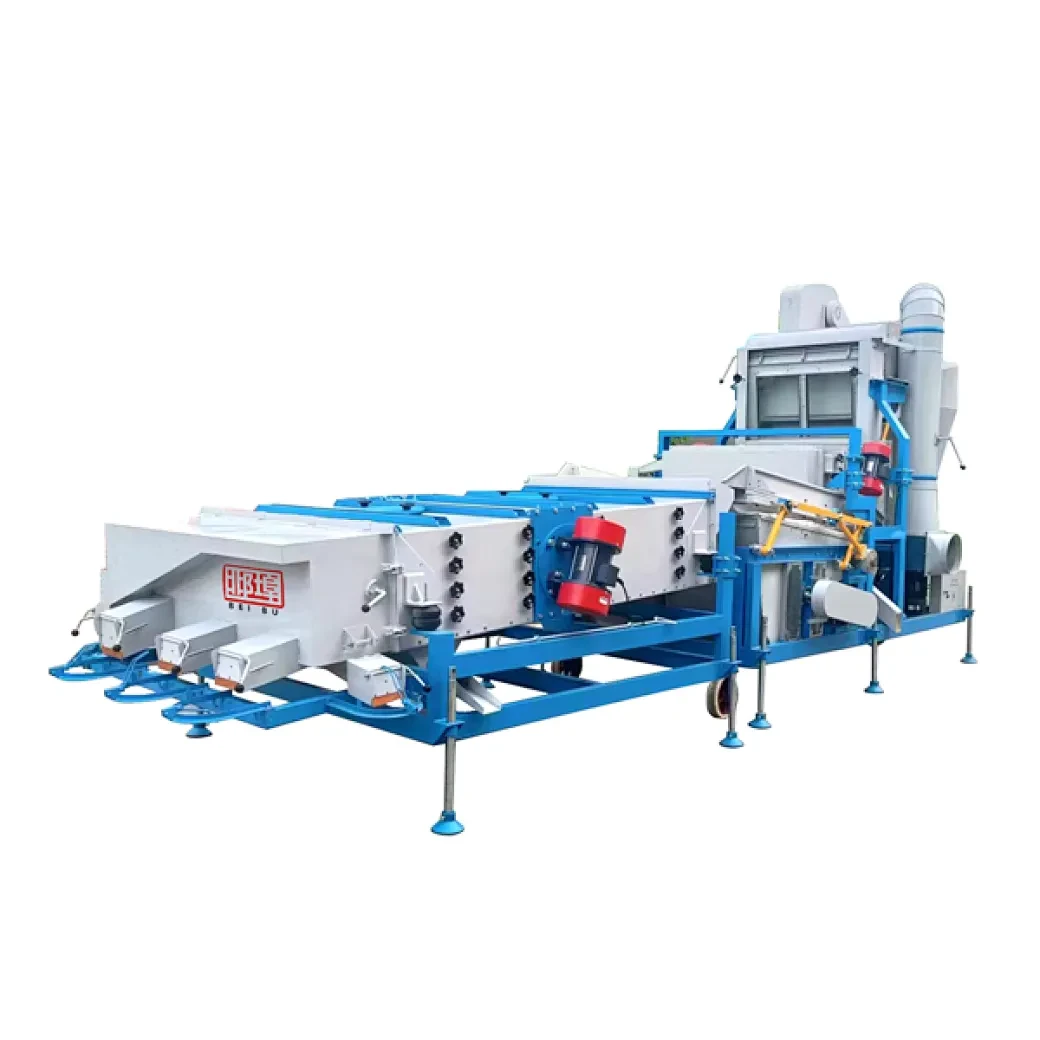
Figure 3: Advanced control panel for precise calibration and operation.
Customer Success and Authoritative Endorsements
The true measure of a grading machine for wheat lies in its real-world performance and the positive impact it has on customer operations. Across various continents, grain processors and large-scale agricultural enterprises have reported significant improvements in their wheat quality and operational efficiency after implementing advanced cleaning and grading systems. For instance, a major grain cooperative in the Canadian Prairies, after integrating the 5XFZ-25S and 5XFJ-10C system, noted a 15% increase in the market premium for their graded wheat due to superior purity and consistency. This enhancement in quality directly translated into higher revenue and strengthened their market position, demonstrating the tangible return on investment from such precision machinery.
Beyond individual success stories, the credibility of such equipment is underscored by adherence to international quality standards and long-standing industry presence. Manufacturers with over a decade of experience in grain processing machinery, holding certifications like ISO 9001 for quality management systems, provide an assurance of robust engineering and reliable performance. Rigorous factory acceptance tests (FAT) and adherence to CE safety directives further validate the machine’s design and construction. These authoritative endorsements, coupled with a consistent track record of client satisfaction, cement the trustworthiness of the technology and the expertise of the supplier, making them preferred choices for critical agricultural investments.
Ensuring Trust: FAQ, Delivery, and Support
Frequently Asked Questions (FAQ)
-
Q1: What types of impurities can the 5XFZ-25S + 5XFJ-10C system effectively remove from wheat?
A1: This integrated system is designed to remove a wide range of impurities including light impurities (dust, chaff, straw), undersized/oversized kernels, shriveled or diseased grains, broken grains, stones, clods of earth, and other foreign seeds based on size, shape, and density differences.
-
Q2: How often does the machine require maintenance, and what is involved?
A2: Routine maintenance involves daily checks for blockages, weekly cleaning of screens and aspiration channels, and periodic lubrication of moving parts (monthly/quarterly). Major servicing and replacement of wear parts typically occur annually, depending on usage intensity. Detailed maintenance schedules are provided in the operation manual.
-
Q3: Can this grading machine for wheat be adapted for other grain types?
A3: Yes, the system is highly versatile. By simply changing the screens and adjusting air volume, vibration frequency, and table incline, it can be effectively used for cleaning and grading various grains such as corn, rice, barley, oats, and even certain pulses and oilseeds.
Delivery and Installation
Upon order confirmation, the typical lead time for manufacturing and preparing a grading machine for wheat for shipment is generally between 30 to 60 days, varying based on customization requirements and current production schedules. We provide comprehensive logistics support, including packaging designed for secure international transit and coordination with reputable freight forwarders. Our technical team offers detailed installation guidance, including layout plans, electrical diagrams, and operational manuals. For larger or more complex installations, on-site supervision or complete installation services by our experienced engineers can be arranged to ensure seamless integration and optimal performance from day one.
Warranty and Customer Support
Each new grading machine for wheat comes with a standard 12-month warranty from the date of commissioning or 18 months from shipment, whichever comes first, covering manufacturing defects and component failures under normal operating conditions. Beyond the warranty period, we offer readily available spare parts and comprehensive technical support through various channels, including phone, email, and remote diagnostics. Our commitment to client success extends throughout the machine's lifespan, ensuring that your investment continues to deliver peak performance and maximum return. We understand the critical nature of continuous operation in agriculture and are dedicated to providing prompt and effective support.
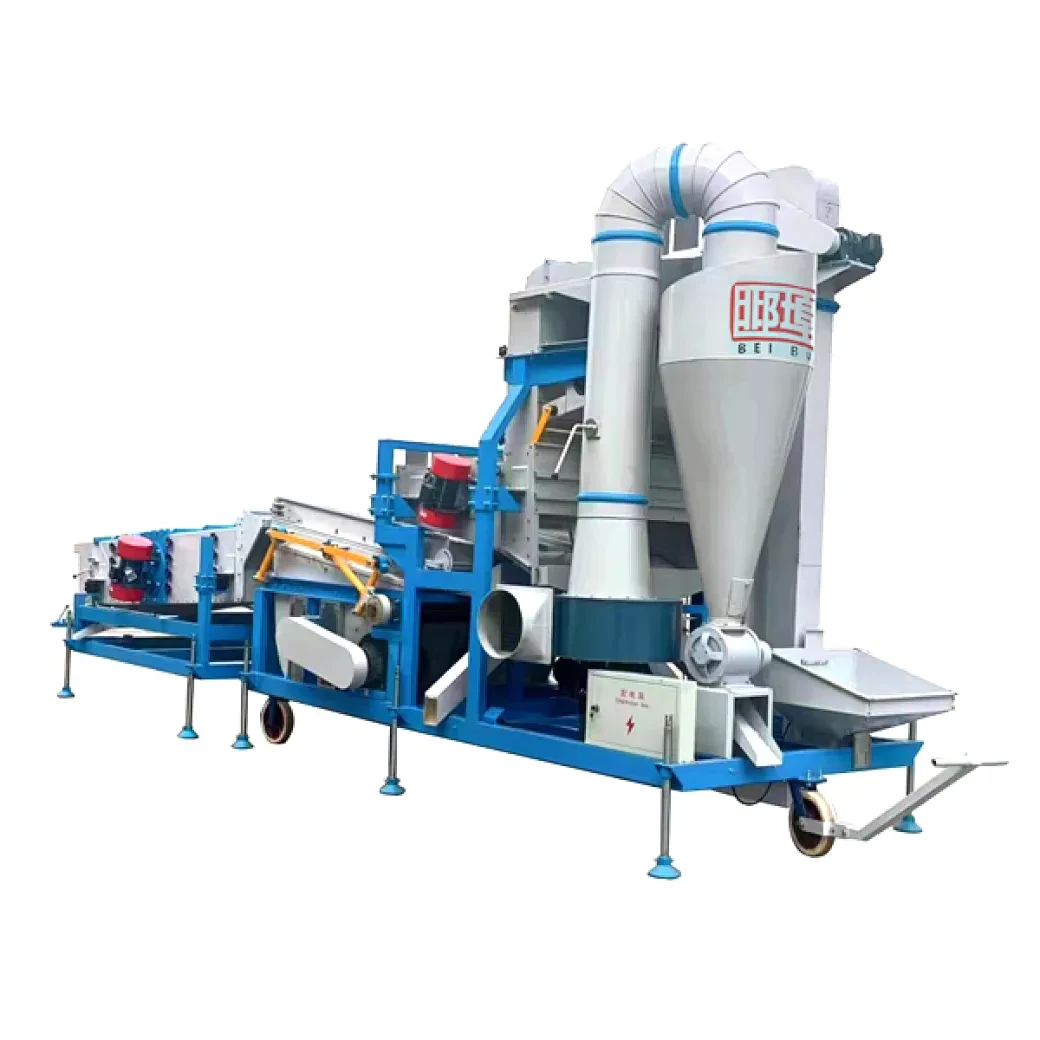
Figure 4: Dedicated support team ready to assist with technical queries and service needs.
Conclusion: The Future of Precision Wheat Grading
The pursuit of excellence in agriculture hinges on the ability to consistently deliver high-quality produce. For wheat, this means not just maximizing yield, but optimizing purity, uniformity, and overall market value. The integration of advanced cleaning and grading technologies, exemplified by robust systems like the 5XFZ-25S Air Screen Cleaner With Gravity Table and 5XFJ-10C Vibration Grader, represents a pivotal step in this direction. These machines are more than just equipment; they are strategic assets that empower grain producers and processors to meet stringent quality standards, minimize waste, and enhance profitability in an increasingly competitive global market. Investing in a superior grading machine for wheat is an investment in the future, ensuring sustainable growth and a stronger position in the agricultural value chain.
As agricultural practices continue to evolve, driven by demands for efficiency, sustainability, and higher quality standards, the role of intelligent, multi-functional grain processing machinery will only grow in importance. The continuous innovation in sensor technology, automation, and data analytics promises even greater precision and adaptability in future grading machine in agriculture. By embracing these technological advancements, the industry can ensure that every kernel of wheat reaches its full potential, contributing to global food security and economic prosperity.
References
- FAO. (2020). The State of Food and Agriculture 2020. Food and Agriculture Organization of the United Nations.
- USDA. (2021). Grain and Oilseed Outlook: World Agricultural Supply and Demand Estimates. United States Department of Agriculture.
- ISO 9001:2015 Quality Management Systems – Requirements. International Organization for Standardization.
- ASABE Standards. (2019). Standards for Agricultural Machinery and Processing. American Society of Agricultural and Biological Engineers.
Jul. 02, 2024
Beibu Machinery CNC bending machine installation and commissioning completed
Sep. 19, 2024
Sesame Cleaning Machine Loading Day-Hebei Beibu Machinery Technology Co.,LTD
Feb. 05, 2025
The new year for grains cleaning machine has begun
May. 21, 2024
Grain Cleaning Machine in Big Capacity-Hebei Beibu Machinery Technology Co.,LTD
Jun. 30, 2025
Nov. 06, 2024
Sesame Cleaning Machine-Hebei Beibu Machinery Technology Co.,LTD
Beibu Machinery
If you are interested in our products, you can choose to leave your information here, and we will be in touch with you shortly.


